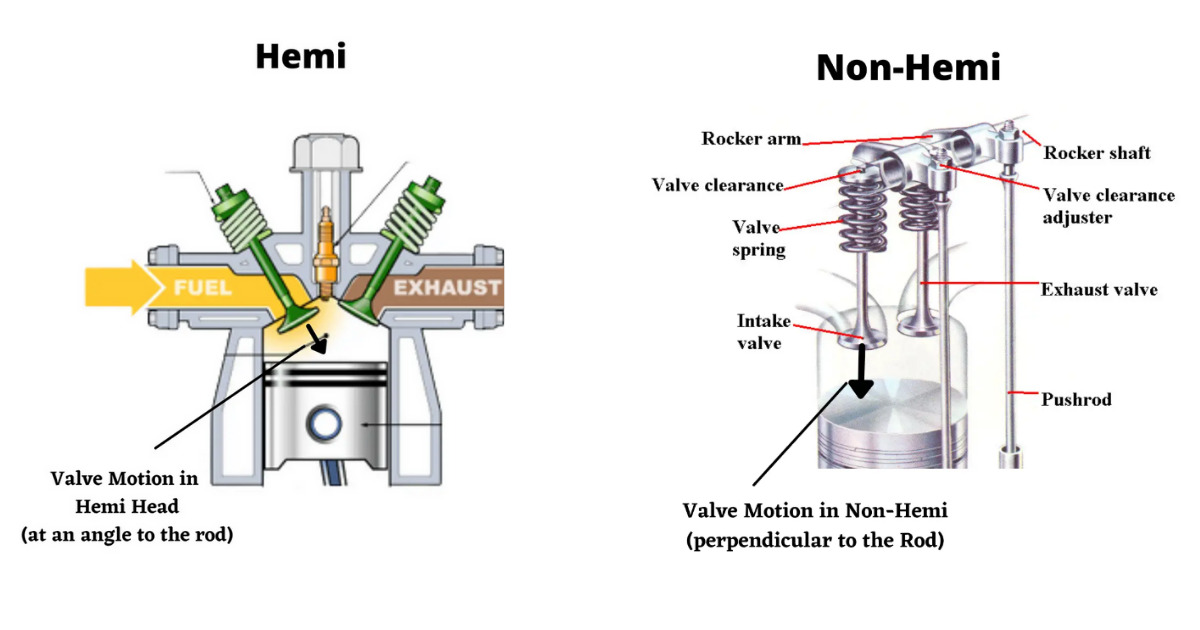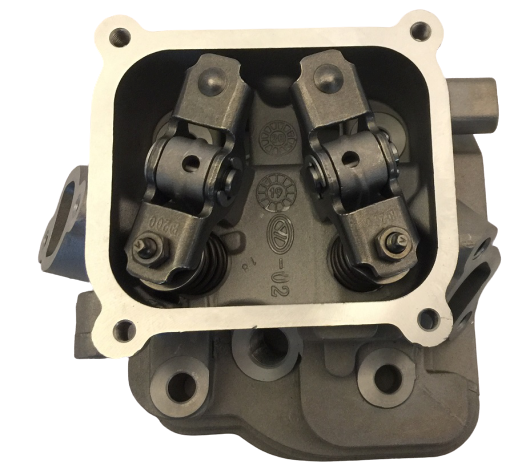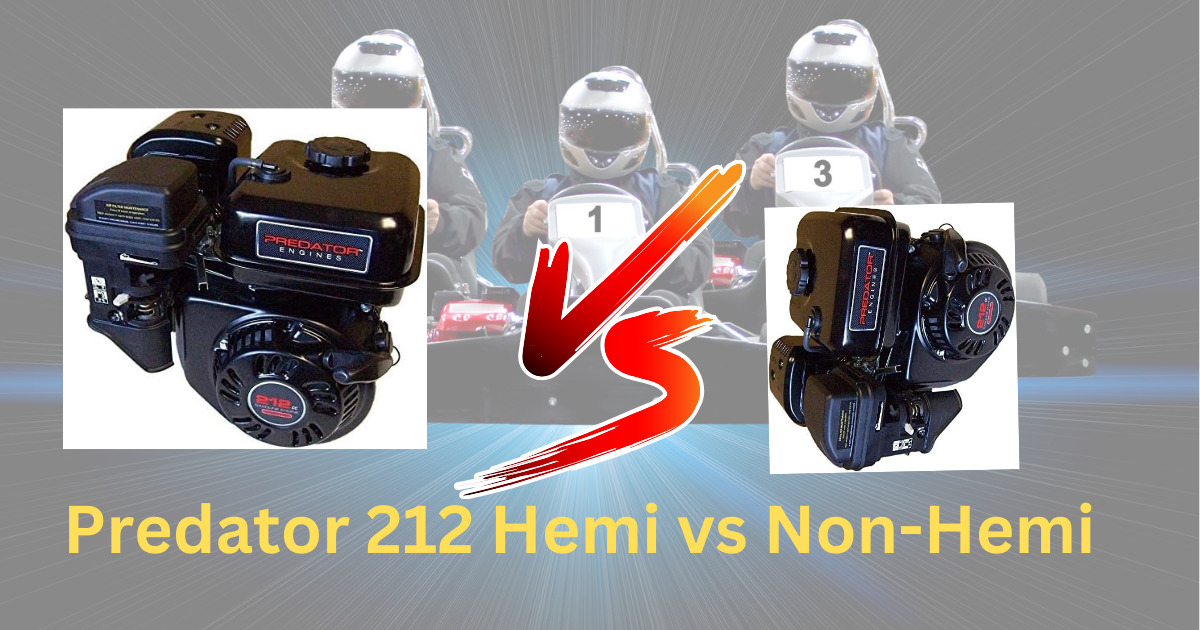Predator 212 Hemi vs Non-Hemi – All-in-one Comparison
The Predator 212 engine is one of the most popular small engines on the market today. It’s commonly used for powering go-karts, mini bikes, lawnmowers, and other equipment. The Predator 212 comes in both a Hemi and non-Hemi version, but many wonder – what’s the difference between the two? Which one is better for your needs?
In this comprehensive guide, we’ll compare and contrast the Predator 212 Hemi and non-Hemi engines to help you decide which is right for your application. We’ll look at power output, torque, parts availability, modifications, and more. By the end, you’ll know exactly how these two engine variants stack up against each other.
What is a Hemi Engine?
First things first – what exactly is a Hemi engine? Hemi refers to a certain cylinder head design that allows for better breathing and airflow. Hemi cylinder heads have a domed, hemispherical combustion chamber that allows for larger intake and exhaust valves. This in turn improves volumetric efficiency – the engine’s ability to fill the cylinders with air/fuel mixture.
The Hemi design also results in less shrouding of the intake and exhaust valves, allowing for freer breathing. The smooth contours of the hemispherical head also promote better fuel/air mixing and flame propagation.
So in summary, Hemi engines can breathe better and have better volumetric efficiency than non-Hemi engines. This can result in more horsepower and torque from the same displacement.
Key Differences Between the Predator 212 Hemi vs Non-Hemi
Now that we understand what a Hemi engine is, let’s look at how the Hemi and non-Hemi versions of the Predator 212 compare:
| Specification | Non-Hemi Head | Predator 212 (Hemi) |
|---|---|---|
| Displacement | 212 cc | 212 cc |
| Max Power | 6.5hp | ~6.8hp (Approx. 0.3 more) |
| Maximum Torque | 8.1 ft-lbs @ 2500 RPM | 8.1 ft-lbs @ 2500 RPM |
| Weight | 37.8 pounds | 37.8 pounds |
| Dimensions | 15.4″ L x 12.6″ W x 13.6″ H | 15.4″ L x 12.6″ W x 13.6″ H |
| Mounting Base Pattern | 6.40″ L x 2.95″ W – 3.17″ W | 6.40″ L x 2.95″ W – 3.17″ W |
As you can see, the Hemi variant makes more horsepower than the non-Hemi. This huge difference in power makes the Hemi the clear winner for high-performance applications.

Engine Design
Obviously, the cylinder head design is the main distinction between the two engines. The Hemi features a hemispherical combustion chamber and cross-flow cylinder head, while the non-Hemi has a flat, pancake-style head.
cylinder head design

This Hemi head shape is the key reason that the Hemi makes more power. The Hemi head allows for much greater breathing efficiency than the non-Hemi.
Orientation
Another significant difference is the engine orientation. The Hemi Predator 212 is oriented horizontally, while the non-Hemi sits vertically.
This can make a difference in certain applications. The horizontal Hemi lends itself better to go-karts and mini bikes where you want a lower center of gravity. The vertical non-Hemi is preferable in some lawn mower applications for packaging reasons.
Parts Availability
In general, aftermarket parts and modifications are more widely available for the non-Hemi Predator 212 than the Hemi. This mainly comes down to the non-Hemi being the older, more established design.
As the Hemi variant becomes more popular, the aftermarket support continues to grow. But right now there are more performance parts made specifically for the non-Hemi, like billet flywheels, larger carbs, and ported cylinder heads.
Weight
Thanks to its horizontal orientation and Hemi cylinder heads, the Predator 212 Hemi engine weighs a few pounds less than the non-Hemi. Exact weights are:
- Predator 212 Hemi – 39 lbs
- Predator 212 Non-Hemi – 43 lbs
This lighter weight gives the Hemi another advantage, allowing faster revving and acceleration. For weight savings, some non-Hemi owners will relocate components like the fuel tank.
Oil Capacity
The engines have slightly different oil capacities:
- Predator 212 Hemi – 0.63 quarts
- Predator 212 Non-Hemi – 0.66 quarts
Not a major difference, but something to be aware of when changing oil. Always be sure to use the factory-recommended 30W or 10W-30-grade oil.
How To Identify Hemi or Hemi
| Identification Method | Hemi Version | Non-Hemi Version |
|---|---|---|
| Check for “Hemi” Badging | Look for “Hemi” or “Hemi Head” | No such markings |
| Cylinder Head Shape | Domed, hemispherical chamber | Flat head |
| Crankshaft Orientation | Horizontal | Vertical when mounted |
| Head Thickness | Thicker (around 70mm) | Thinner (around 55mm) |
| Carburetor Type | Diaphragm-style | Splash-type carburetor |
| Ignition System | Traditional spark plug ignition | Electronic CDI system |
| Engine Height | Lower (about 14 inches tall) | Taller (around 17 inches tall) |
| Spec Label | “Predator 212cc Hemi” indicated | Flathead |
When purchasing from a store, you can visually identify Hemi and Non-Hemi engines using part numbers. Hemi engines are labeled as #60363, while non-Hemi engines are designated as #69730, with EPA-approved non-Hemi versions labeled as #69727.
Performance Modification Comparison
One of the great things about both the Hemi and non-Hemi Predator 212 is how receptive they are to performance modifications. Let’s look at some of the most common mods and how they affect each engine:
Stage 1
A “Stage 1” upgrade involves simple bolt-on mods like:
- Air filter upgrade
- Performance exhaust
- Adjustable carburetor
- High-flow fuel valve
These basic upgrades normally add 2-3 HP on both the Hemi and non-Hemi. A bigger carb like a Mikuni makes the most noticeable difference in throttle response and power output.
Stage 2
“Stage 2” takes things further with upgrades like:
- Porting the cylinder head
- Polishing intake/exhaust ports
- Higher compression piston
- Performance camshaft
Headwork and a ported intake will bump the Hemi up to around 18 HP and the non-Hemi to 10+ HP depending on how radical the porting is. Adding a hotter cam and piston can gain another 1-2 HP.
Stage 3
At “Stage 3” you’re maxing out the capabilities of the stock bottom end with upgrades like:
- 265cc high-comp piston
- Aggressive race cam
- Lightweight valve springs
- Sanding cylinder deck
Expect up to 22 HP from a worked-over Hemi, and around 13 HP from the non-Hemi at this stage. Reliability may start to become a concern with extremely high compression ratios or radical cams.
Hemi vs Non-Hemi: Pros and Cons
To summarize the key advantages and disadvantages:
Predator 212 Hemi Pros:
- More stock horsepower and torque
- Greater performance potential
- Lighter weight
- Hemi cylinder heads flow better
- Diaphragm-style carburetor
Predator 212 Hemi Cons:
- Less aftermarket support currently
- Must be mounted horizontally
- More expensive upfront cost
Predator 212 Non-Hemi Pros:
- Broader aftermarket parts selection
- Can be mounted vertically or horizontally
- Lower initial cost
- Easier to find replacement parts
Predator 212 Non-Hemi Cons:
- Less horsepower and torque stock
- Not as high of a performance ceiling
- Heavier in stock form
- Splash carbs can limit performance
As you can see, there are great reasons to choose either engine. The Hemi makes more power out of the box, while the non-Hemi has advantages like cost and parts availability.
Finding the Right Engine for You
So which Predator 212 is right for your needs – the Hemi or non-Hemi? Here are some guidelines:
Choose the Hemi if:
- You want maximum power – the Hemi makes nearly twice the HP
- Hill climbing ability is important
- Acceleration is a priority over top-speed
- You intend to modify the engine heavily
- Weight savings is a concern
Choose the non-Hemi if:
- You’re on a tight budget – the non-Hemi costs less upfront
- You need to mount the engine vertically
- Easy parts access is critical
- Reliability is more important than peak power
- You want a simple, bolt-on performance increase
Of course, there are always exceptions to these general recommendations. But thinking through your performance goals and budget will help narrow down the right Predator 212 for your application.
You can’t go wrong with either engine as the basis for a go-kart, lawn mower, or mini bike build. Both variants of the Predator 212 offer great bang-for-buck performance. With a few simple upgrades, you can extract even more speed and power from these little workhorse engines.
Frequently Asked Questions
Still, have some questions about comparing the Predator 212 Hemi and non-Hemi engines? Here are answers to some of the most common FAQs:
Is the Hemi Predator 212 worth the extra cost?
For most performance applications, yes – the extra horsepower of the Hemi model is well worth the modest price increase over the non-Hemi. The Hemi makes nearly twice the power even in stock form.
Can you swap a Hemi head for a non-Hemi Predator 212?
Yes, this head swap is possible but requires some additional custom parts like adapter plates. It’s generally not a cost-effective upgrade. Easier to just start with a Hemi model.
How reliable is the Hemi Predator 212 engine?
Most find the Hemi just as reliable as the non-Hemi, especially if not pushed to the extreme limits. Focus on proper break-in, tuning, and maintenance for best durability.
What’s better, the Predator 212 Hemi or the Honda GX200?
Very comparable engines in stock form. Once modified, a built Predator Hemi can match or exceed a modified GX200 at a lower cost. But some prefer the Honda for OEM quality.
Will a Predator 212 Hemi fit my go-kart made for a non-Hemi?
Possibly, but may require some engine mount modifications. Hemi is a little wider. Measure carefully for fitment or consult your chassis manufacturer.
What gas and oil should I use in my Predator 212?
Run 87+ octane fuel without ethanol if possible. Use quality 30W or 10W-30 motor oil and change regularly. Predators like to be treated well!
How do I know if I have a Hemi or non-Hemi Predator 212?
The easiest way is to check for the Hemi badge on the valve cover. Hemi also has a horizontal crank orientation vs. vertical on the non-Hemi. Cylinder heads are very visibly different.
Get the Most from Your Predator 212
We hope this Predator 212 Hemi vs non-Hemi comparison has helped give you a better understanding of these excellent engines. Whichever model you choose, proper setup and tuning will be key to extracting maximum performance and longevity. Don’t be afraid to upgrade your exhaust, or carb, or add other bolt-ons to match your engine’s capability.
If you still have questions about optimizing your Predator 212 engine, don’t hesitate to ask a mechanic or check out the many helpful online forums and groups. With the right modifications and tweaks, the Predator 212 can become a horsepower beast beyond its size.




